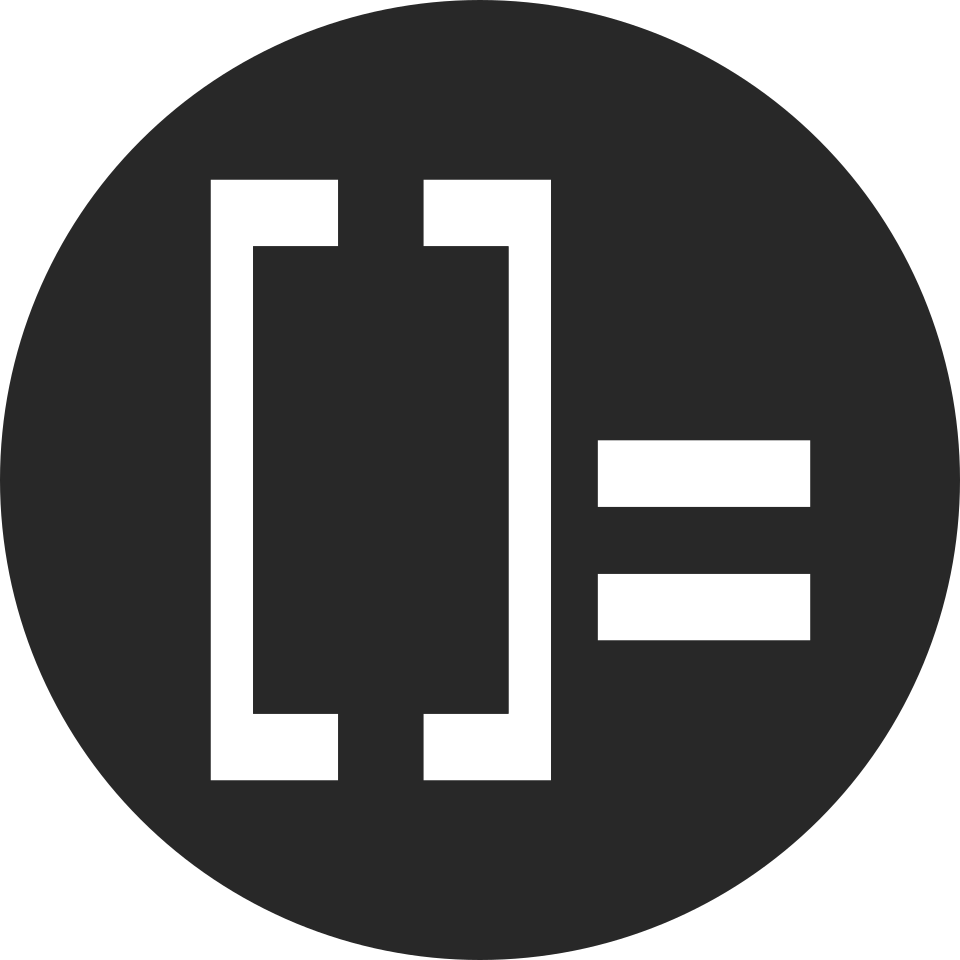I think it’s safe to say that most people here have used more than one Linux distribution, and their first distro wasn’t their last. I’m curious, what were the steps that took you from your first Linux distro to what you currently use? What were the reasons you switched away each time? Would you ever switch back to an old distro? Are you happy with your current one?
deleted by creator
Here’s mine:
-
When I wasn’t using Linux full time (mostly on USB live images and VMs), Linux Mint was my go-to simply because someone I knew recommended it. I also dabbled in Ubuntu which was most likely my first ever exposure to Linux.
-
When I bought a used desktop PC (currently my daily driver), I installed Ubuntu on it. It was my first daily driver Linux distro. However, I later installed an SSD to go with my hard drive, and Ubuntu’s default installer wasn’t able to set it up so that the system was on the SSD and the home folder on the hard drive, and then encrypt all partitions. I tried to set it up manually after installation but failed. I later decided to not go back Ubuntu again because of Canonical’s increasing unfriendliness to FOSS and privacy.
-
Then I tried Manjaro. Worked great, until an Nvidia driver update killed it. I now also have slight reservations about Manjaro’s friendliness toward FOSS
-
Then I tried Debian set to the unstable or “sid” package branch for some applications. Worked great until an app fiddled with the Qt packages and killed it.
-
Then I tried OpenSUSE Tumbleweed (their rolling release version). Worked phenomenally until an Nvidia driver update killed it. Actually, OpenSUSE worked so well that I reinstalled the system multiple times, more times than any of the other distros (which was really easy because the installer let me not even touch the encrypted home partition meaning I didn’t have to shuffle my data around), and each time Nividia driver updates killed it. The moral of the story here is to buy AMD if you want good Linux support, their drivers are open source and, as I’m told, worlds ahead on Linux than Nvidia.
-
Finally, I went to Fedora which is still my daily driver, and I really like it. Though I will probably give OpenSUSE another shot sometime in the near future. I would personally have no problems recommending either Fedora or OpenSUSE (just stay away from the rolling release version if you have Nvidia graphics).
-
Not a distro hopper. Have been using Void with little to no problems for over five years. Used Ubuntu and Arch Linux before that. I would only consider switching from Void if functional package managing becomes big and something like Guix becomes popular.
But I did recently switch from using ext4 as the file system to ZFS for no reason other than sheer curiosity. Hopefully I don’t file system-hop anymore.
Started with Red Hat, about 20 years ago (~6.x?). Tried OpenSUSE for a bit too, as I recall. Used KNOPPIX for a lot of stuff, back in the day. Ran OpenWrt for a few years too. Then Ubuntu from the early days – have pretty much always run that somewhere since. Mint is my main desktop, and has been for, oh, six years or so, I guess. Tried Puppy for a bit, to breathe life into my old netbook; switched to LXLE and am really happy. Just started running Xubuntu on an old desktop I found; workin’ great so far.
The reason I switched to Linux was - surprise, surprise - Windows Update. I still maintain WU is a crime against humanity considering how much time and patience it wastes. Then I installed Ubuntu and stayed there for a while and tried others like Xubuntu, Mint, Mageia, Antergos and very briefly Arch.
The reason I switched to other distros was simply curiosity. Later it was because I had to switch from a desktop to a laptop and since only Arch-derived distros worked on it, I settled on those. I am currently on EndeavourOS and am thinking of switching to ArcoLinux.
Ubuntu 2008 - 2010
Trisquel 2010 - 2014
Debian 2014 - 2019
GNU Guix System 2019 - present
First decade can be summed up as learning about GNU/Linux and the free software movement. Ubuntu of course was the “Linux” for new users back in those days so of course it was my entry point. I moved to Trisquel, a fully-liberated Ubuntu derivative, upon fully embracing Stallmanism, and then to Debian once it seemed Trisquel was falling behind on updates and because Debian was ultimately the “source” of all Ubuntu/Mint derivatives anyway (it’s all Debian? Always has been).
There’s nothing particularly wrong with Debian for my use case but I became interested in GNU Guix package manager and OS fairly recently and wanted to dive into it, and it’s been a learning experience since. I started my own Guix channel (package repository) where I maintain personal packages for my own use, and in 2020 I helped contribute one of said packages, Icedove, a fully-free Thunderbird derivative; my pen name is present in the copyright declaration of gnuzilla.scm.
deleted by creator
Red Hat -> SUSE -> Knoppix -> Ubuntu -> Manjaro -> Pop OS
- Red Hat - My high school friend and his dad introduced me to Linux and helped me build a desktop to install it on. They installed Red Hat. I liked the aesthetic and it worked ok at first, but gradually bitrot and frustration with RPM dependency hell led me to reinstall with SUSE.
- SUSE - I thought maybe commercial support would make a difference, so I actually purchased SUSE in a box instead of downloading it for free. I guess I hoped it would be Red Hat, but better? Bitrot and dependency hell eventually made this system unusable as well.
- Knoppix - So I figured, hey, if I store the operating system on a CD and never modify it, it can’t bitrot, right? I just used my hard drive for storing documents etc., and ran Knoppix off of a CD. This worked fine, especially since this was right around when Gmail and similar web apps were being released, so I was able to get a lot done in the browser. Of course, not being able to install and update software eventually became too frustrating, and once you install Knoppix to the hard drive it can suffer bitrot too. The last straw was not being able to get any video editing software working after I bought a camcorder. I broke down and bought a Macbook Pro.
- Ubuntu - I heard it was way more usable than previous Linux distros, so I started dual-booting my Mac. It was pretty good, but not good enough to make me switch from OS X full time. Eventually I bought a new Macbook Pro and never got around to dual-booting that one, and I stopped using Linux on the desktop for a while. I continued using Ubuntu on my Linode-hosted web server, though.
- Manjaro - I bought a Pinebook Pro before it shipped with Manjaro, but the default Debian install was a fragile hack and I heard Manjaro was better, so I tried it and it was. It becoming the default solidified this decision.
- Pop OS - After enjoying the Pinebook Pro, I decided that I wanted to support open hardware + software, so I bought a System76 Thelio and switched to Linux full-time. I gave the default Pop OS a try, and I really like some aspects like the tiling window manager. So I’m still using that, for now!
Xubuntu → Linux Mint → Elementary OS → Ubuntu. I don’t consider Ubuntu to be my last (yet) and every now and then I think about returning to Elementary OS, just because it is beautiful.
The reason I keep changing is just to get to know, test something new, see how I deal with it.
WinLinux 2000 -> Mandrake -> Red Hat -> Fedora Core -> Ubuntu -> Mint -> Arch … (break from Linux) … openSUSE Tumbleweed -> Manjaro -> Arch -> Debian sid -> Bedrock Linux (w/Arch and Ubuntu stratas)
Bedrock (my daily driver) allows me to pick and choose different components from different distributions and use them all together. It’s basically the best of all worlds.
Linux Mint → Arch because installing up-to date software is inconvenient in Linux Mint.
This has been getting better with Flatpak, at least for GUI applications that have been packaged on Flathub. You can get a stable base system with full upgrades every so often, then get quick upgrades to the Flatpak software. However, that leaves behind CLI applications and unpackaged applications so it’s not a full solution yet.
I first used Ubuntu, because my used laptop were with Windows 7 and I knew linux from programation internet lessons. Then I jumped to Mint for just curiosity.
I started with RedHat 5.2 (Probably around 1998 or 1999), then Debian -> Slackware -> Gentoo -> Arch -> Ubuntu. Not I typically use a mixture of Ubuntu and OpenBSD on desktop and Debian and OpenBSD on servers. I also did Linux from Scratch around the same time as I was using Gentoo.
-
Elementary OS
I wanted to use this before I switched because the locked down-ness appealed to me, I thought I would break things if I was given free range. This was short lived because once I installed it I realized I hated the theme and it’s skeumorphic style.
-
Ubuntu
While frantically scrambling for something safe and accessible for me I jumped straight to ubuntu, I didn’t like it’s theming as much either but I was able to easily change it to a simple arc theme, also I was introduced to the gnome addon store which was insane to me, (I remember telling my friends how cool it was to be able to install widgets and functionality from a website) I loved the customization. after about a week I was getting along nicely but I still missed windows a decent amount, but I didn’t care that much because im on freaking linux .
I started learning about different desktop environment (looking back I didn’t know much at all but I thought I knew what they were back then) and I decided to try out KDE so I (you might want to take a seat for this because it was genius) installed KDE on top of gnome on ubuntu, pressing y to any prompt that came up. Obviously this went catastrophically, but for a good hour or two I didn’t notice and I was super into it. then I realized everything was funky so I tried to undo it, which took ages and a lot of tears. I felt safe back at gnome but I was left wanting after that taste of pure (easy) customization and the feeling of bloat (from not uninstalling things right) leading me to switch to:
-
Kubuntu
I was super excited to switch to this, and I was surprised to see all the things I missed out on when I did the janky install on ubuntu. Dolphin, KDE connect, kvantum, transparent blur, it was all so beautiful. I used Kubuntu for a while before hearing about
-
Manjaro
I had heard the praises of arch and the AUR and seeing a distro turn that into something simple enough for me to use was nearly an instant sell. The installation took me a long time because I didn’t know how my BIOS worked but after 3 days (lol) I got it working and it was amazing. I went straight into customizing it to be mine again and used it for the longest I’ve used a distro ever, only recently I started getting into the idea of trying out other desktop environments and even cooler, window managers. I wanted to try Deepin and xfce, i3 and openbox, but I didn’t want to dual boot and after the disaster on ubuntu I wasn’t going to try installing another desktop environment on manjaro so I just kind of ignored it and moved on with my life. At least until I heard of
-
Arco linux
I head about this from a youtuber old tech bloke, the moment I saw it I knew I had to have it, I wrote the usb and went to sleep, the next day I installed it, starting a long 3 weeks of troubleshooting and learning. I had never used such a “raw” distro, having to install the things I need and not having it done for me was a learning experience. I also routinely broke the os having to reinstall around 7/8 times, the last time I broke pacman and it’s signatures making it basically useless. After all this I got flustered and gave up going back to
-
Manjaro (again)
this was short lived however because for some reason there were a bunch of issues the most prominent being the wallpaper on my main monitor not loading right on restart while it did on my secondary, there was definitely a way to fix it I’m sure but I also missed learning awesome and i3 and messing around with UKUI and DeepinDE so I decided to jump back to
-
Arco Linux (again)
I returned to arco linux again and decided to be very careful about just throwing myself around on here and instead be calm and methodical and that’s where I am today, still learning more every day and still loving linux every damn day.
-
Reading everyone’s journey is making me want to distro hop again… My first distro was Linux Mint. It was recommended to me by someone I met at the library. I then tried Manjaro. I really enjoyed it but every now and again my system would freeze and sometimes wouldn’t even boot. I think tried Solus next. Or maybe Antergos? Peppermint was cute, and Pop_OS was really polished. I know the most recent one was KDE neon. KDE is my favorite desktop because it’s so flashy and I found it the easiest to customize. Right now I’m on EndevourOS. I wanted to get into Arch but I was kinda afraid and so I thought this would be a nice intro to it. I’m thinking of trying Artix next, oh or maybe FreeBSD!









